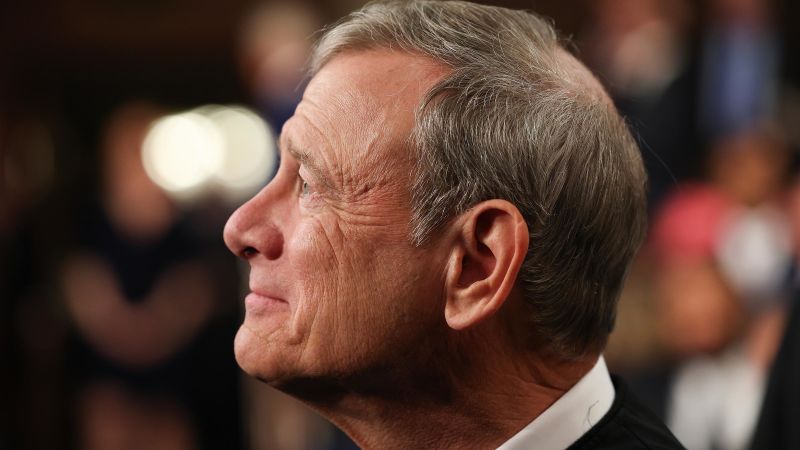Over the course of two decades, Chief Justice John Roberts has profoundly influenced the trajectory of American jurisprudence, particularly surrounding matters of religious freedom and the separation of church and state. His judicial philosophy is characterized by a deliberate, case-by-case approach that incrementally shapes legal precedents. This meticulous construction of legal principles is coupled with a well-documented aversion to abrupt changes—what he has termed “jolts” in the legal system. The current debate centered around the First Amendment’s treatment of religion, as articulated in a recent oral argument concerning private religious institutions, underscores Roberts’ unique role as a judicial architect in these complex issues.
In the recent case, Roberts is referenced as having authored key decisions that now establish the legal foundation for the proponents of an Oklahoma religious public charter school. The situation is particularly significant given that these developments trace back to his rulings in 2017 concerning Missouri, where he mandated the state to provide funding for the resurfacing of a church-affiliated playground. This judicial action opened the doorway for subsequent decisions in 2020 and 2022 that favored parental access to student aid and tuition reimbursement for religious schools.
Justice Sonia Sotomayor, a frequent voice of dissent in these cases, articulated concerns that Roberts’ judicial pathway breaches the crucial constitutional separation of church and state. Her notable warning during one dissent highlighted the potential consequences of a trajectory begun five years ago, cautioning against the manipulative interpretation of legal frameworks that may favor religious institutions over secular educational initiatives.
The plaintiffs in this recent case, represented by the St. Isidore of Seville Catholic Virtual School, contend that legal precedents laid down by Roberts and others indicate that states might soon be required to fund religious charter schools directly. Following oral arguments, it appeared likely that Roberts would be pivotal in deciding the outcome of this case. Despite the groundwork he has laid, Roberts exhibited hesitance when contemplating the possibility of significantly expanding state-sponsored religious education, suggesting that the current case represents a broader and more intricate involvement of the state in matters of religion than previous decisions.
The Supreme Court’s deliberation in this instance will involve justices from an eight-member court, leaving room for a potential tie. Notably, Justice Amy Coney Barrett recused herself possibly due to her connections with the parties involved in the case. If Roberts were to align with the conservative faction of the court, a majority could be reached; conversely, siding with the liberal justices might create a stalemate, thereby affirming the lower Oklahoma Supreme Court’s ruling against the St. Isidore initiative.
During the arguments, other justices were attuned to Roberts’ signals, attempting to glean his inclinations through their own line of questioning. Notably, Justice Elena Kagan posed direct inquiries as a response to Robert’s ambiguous statements, seeking clarity on how the justices would navigate the potential repercussions of restructuring school funding models across not only Oklahoma but numerous other states that maintain a separation between charter and sectarian education.
Garrett Garre, representing the Oklahoma attorney general, underscored alarming implications of a ruling favoring religious schools, arguing that such a decision might jeopardize the status of charter school laws nationwide. According to him, a ruling reiterating taxpayer-funded religious education would bring about unprecedented confusion, hampering honesty in the foundations of education across the country.
While recent landmark cases led by Roberts, namely Trinity Lutheran v. Comer and Espinoza v. Montana Department of Revenue, cited the Free Exercise Clause as justification for enhancing public funding for religious establishments, dissenters caution that discussions of direct funding for religious schooling necessitate a reevaluation of the Establishment Clause as well. The discussion underlines a notable tension wherein the interpretation of the Free Exercise Clause could overshadow the government’s imperative to maintain a secular educational framework.
Thus, the current case not only builds upon Roberts’ previous decisions but also invites scrutiny of how those rulings converge with fundamental principles outlined in the First Amendment. As justices deliberate the intersection of church and state through schooling, the implications of these judicial choices will resonate beyond this singular case, influencing how religious and secular institutions engage within public spheres moving forward. Roberts finds himself at a crossroads where historical precedents meet contemporary challenges, effectively defining the future landscape of education and religious expression in the United States.



